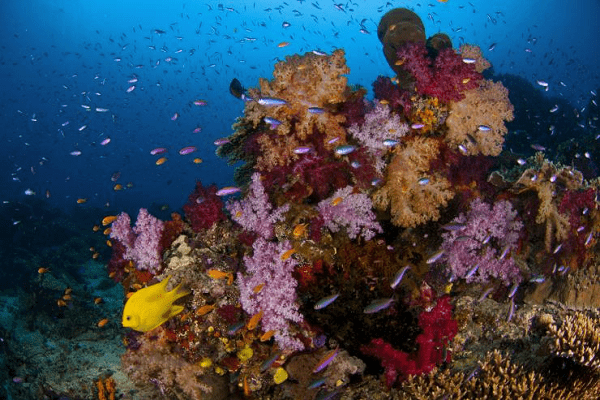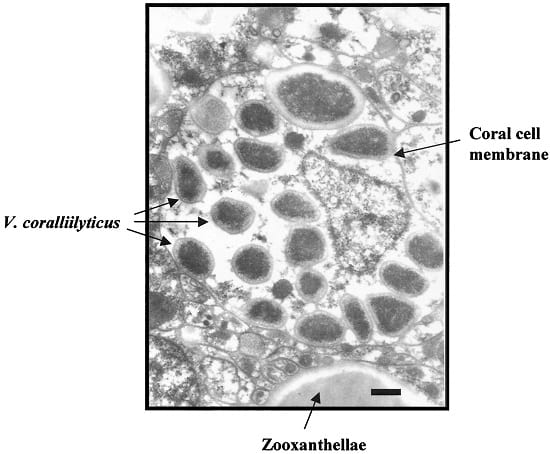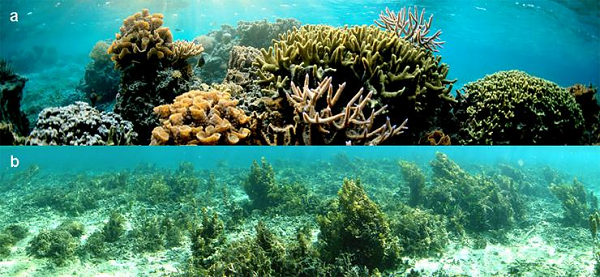How Chemical Potions and Hungry Fish Protect Coral Reefs
October 26th, 2019
by Ariel Tokarz

While wild colonies of coral may look more like upturned dust brooms than wizards, they’re more adept at creating chemical potions than any person of magic. Coral reefs are taking quite a beating these days due to climate change, but recent research shows that they are not beyond hope.
Chemical Potions: A Coral’s Best Defense
A healthy coral’s defense system uses these potions – medicated solutions composed of a variety of chemicals, in association with microbes, to fight bacterial attackers. Together, the chemical potion and the microbes are called a holobiont.
Just like the holobiont keeps a coral colony healthy, the coral colonies keep the reefs where they flourish. One particular genus, Acropora, makes up a fourth of the coral found in Pacific reefs. They grow higher as the sea level rises, maintaining healthy positions for the reef.
They’re big and branching and contain lots of little crevices where fish can live. The evolution of lots of reef fish – and reefs – parallel the evolution of this particular genus of coral.
It means that any damage to this coral has terrifying implications for its home reef.

Warming Water Decreases Corals’ Chemical Potion Effectiveness
The most common – or at least most widely known – type of damage to coral reefs occur with bleaching (decolorizing). When water gets too warm, corals expel the algae that live in their tissue, causing them to turn white.
A photo of a bleached reef is a photo of the corals’ bones: the bright colors actually come from photosynthetic algae, called zooxanthellae, that live in cracks and holes in coral tissue.
It may seem weird, but it’s a meaningful symbiotic relationship. The algae are protected from the environment by the coral, as well as provided the compounds they need for photosynthesis; in return, they supply oxygen, glucose, and other products of photosynthesis to the coral.
Bleaching occurs when something like heightened temperatures disturbs the coral – stresses it out, and this relationship can no longer be sustained. Kicking out the algae doesn’t automatically mean that the coral dies: the relationship can be restored if the stress the coral is experiencing is decreased.
However, bleaching does make the colony more susceptible to pathogens, and the higher temperatures reduce the efficiency of their protective chemical potions.
A recent study on the effects of global warming observed this trend quite clearly.
A team of oceanic ecologists led by Mark Hay, regents professor of the Georgia Institute of Technology’s School of Biological Sciences, tested how well the potions made by three coral species protected against the pathogen Vibrio coralliilyicus, commonly found in bleaching events.
The study showed water at 28 °C, a typical temperature for ocean heating, disadvantaged all potions compared to protective ability in water a mere four degrees lower – at 24 °C.

Local Reef Protection Can Make a Difference
Hay’s study produced another remarkable result. The researchers collected samples of the three coral species from two Fijian reefs: one where the reef was protected from fishing; a second where fishing was allowed and, without fish to nibble it, seaweed had grown up around the coral.
The potion produced by coral Acropora millepora was notably more effective in the protected reef than the unprotected, overgrown one.

It shows that any attempt to protect reefs, even at local levels, can make a big difference in keeping these ecosystems thriving.
There is a lot of argument about whether local management can help in the face of global stresses
said Hay.
Our work indicates that local management provides a degree of insurance against global stresses.
If fish can keep thriving, maybe the reefs where they live can too.
Further Reading
Read the full study here: Georgia Tech News Center. Warming Impedes a Coral Defense, but Hungry Fish Enhance It. [https://www.news.gatech.edu/2019/10/02/warming-impedes-coral-defense-hungry-fish-enhance-it]
To learn more about dangers facing coral reefs and conservation efforts: Exposure Lab’s Chasing Coral. [https://www.chasingcoral.com/]
Image Sources
American Society for Microbiology
Want more science now?
Check out our news page where we post interesting studies and discussions (sometimes mocking them mercilessly) for more.
